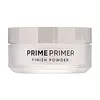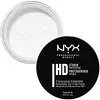What's inside
What's inside
 Key Ingredients
Key Ingredients

 Benefits
Benefits

No benefits
 Concerns
Concerns

 Ingredients Side-by-side
Ingredients Side-by-side

Silica
AbrasiveDimethicone
EmollientMacadamia Ternifolia Seed Oil
EmollientDimethicone/Vinyl Dimethicone Crosspolymer
Skin ConditioningVinyl Dimethicone/Methicone Silsesquioxane Crosspolymer
Chamomilla Recutita Flower Extract
MaskingFreesia Refracta Extract
Skin ConditioningLavandula Angustifolia Flower Extract
CleansingMentha Piperita Leaf Extract
Skin ConditioningMonarda Didyma Leaf Extract
Skin ConditioningRosmarinus Officinalis Leaf Extract
AntimicrobialMentha Arvensis Leaf Extract
MaskingMentha Suaveolens Leaf Extract
AstringentDiospyros Kaki Leaf Extract
Skin ProtectingCaprylyl Glycol
EmollientEthylhexylglycerin
Skin ConditioningNylon-12
Water
Skin ConditioningPolymethyl Methacrylate
Tocopherol
AntioxidantButylene Glycol
HumectantPolymethylsilsesquioxane
Polyquaternium-10
1,2-Hexanediol
Skin ConditioningLauroyl Lysine
Skin ConditioningTriethoxycaprylylsilane
Parfum
MaskingMica
Cosmetic ColorantCI 77492
Cosmetic ColorantSilica, Dimethicone, Macadamia Ternifolia Seed Oil, Dimethicone/Vinyl Dimethicone Crosspolymer, Vinyl Dimethicone/Methicone Silsesquioxane Crosspolymer, Chamomilla Recutita Flower Extract, Freesia Refracta Extract, Lavandula Angustifolia Flower Extract, Mentha Piperita Leaf Extract, Monarda Didyma Leaf Extract, Rosmarinus Officinalis Leaf Extract, Mentha Arvensis Leaf Extract, Mentha Suaveolens Leaf Extract, Diospyros Kaki Leaf Extract, Caprylyl Glycol, Ethylhexylglycerin, Nylon-12, Water, Polymethyl Methacrylate, Tocopherol, Butylene Glycol, Polymethylsilsesquioxane, Polyquaternium-10, 1,2-Hexanediol, Lauroyl Lysine, Triethoxycaprylylsilane, Parfum, Mica, CI 77492
 Reviews
Reviews

Ingredients Explained
These ingredients are found in both products.
Ingredients higher up in an ingredient list are typically present in a larger amount.
Caprylyl Glycol is a humectant and emollient, meaning it attracts and preserves moisture.
It is a common ingredient in many products, especially those designed to hydrate skin. The primary benefits are retaining moisture, skin softening, and promoting a healthy skin barrier.
Though Caprylyl Glycol is an alcohol derived from fatty acids, it is not the kind that can dry out skin.
This ingredient is also used as a preservative to extend the life of products. It has slight antimicrobial properties.
Learn more about Caprylyl GlycolDimethicone is a type of synthetic silicone created from natural materials such as quartz.
What it does:
Dimethicone comes in different viscosities:
Depending on the viscosity, dimethicone has different properties.
Ingredients lists don't always show which type is used, so we recommend reaching out to the brand if you have questions about the viscosity.
This ingredient is unlikely to cause irritation because it does not get absorbed into skin. However, people with silicone allergies should be careful about using this ingredient.
Note: Dimethicone may contribute to pilling. This is because it is not oil or water soluble, so pilling may occur when layered with products. When mixed with heavy oils in a formula, the outcome is also quite greasy.
Learn more about DimethiconeMica is a naturally occurring mineral used to add shimmer and color in cosmetics. It can also help improve the texture of a product or give it an opaque, white/silver color.
Serecite is the name for very fine but ragged grains of mica.
This ingredient is often coated with metal oxides like titanium dioxide. Trace amounts of heavy metals may be found in mica, but these metals are not harmful in our personal products.
Mica has been used since prehistoric times throughout the world. Ancient Egyptian, Indian, Greek, Roman, Aztec, and Chinese civilizations have used mica.
Learn more about MicaPolymethylsilsesquioxane is a silicone used as a film forming agent.
When applied to the skin, this ingredient creates an invisible film on the surface. This film still allows oxygen to pass through, but prevents moisture from escaping. This can help condition and hydrate the skin. It also leaves a silky feel when applied.
Polymethylsilsesquioxane has not been shown to clog pores. It has been deemed safe to use up to 55%, but most cosmetics use much less.
If you have concerns about using this ingredient, we recommend speaking with a professional.
Learn more about Polymethylsilsesquioxane